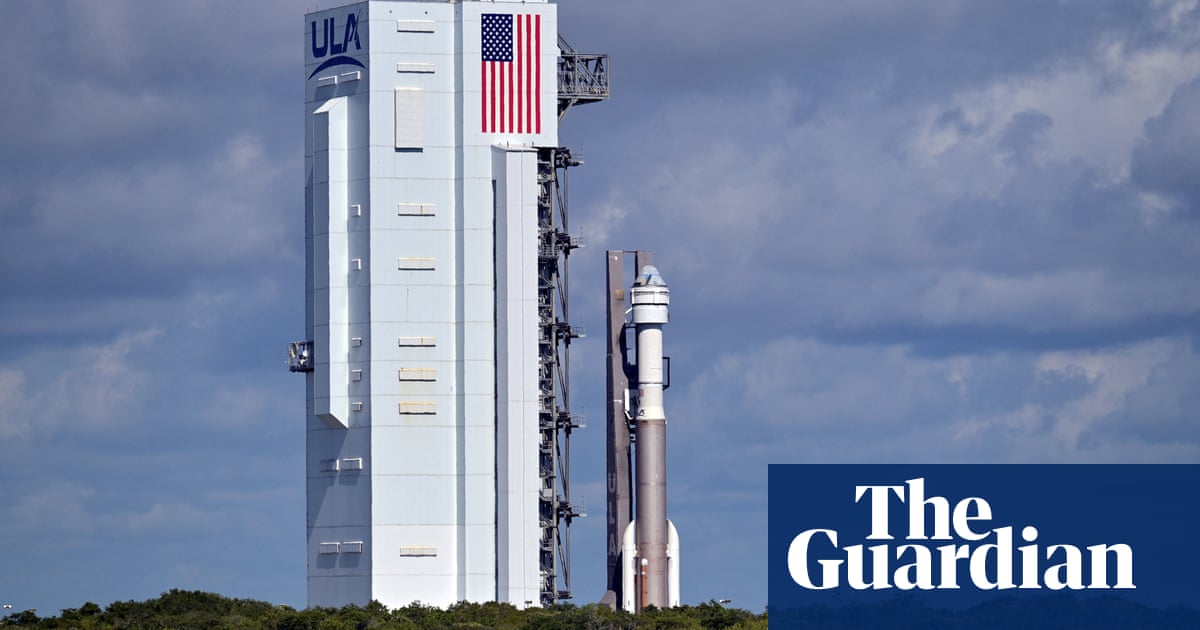Boeing has an opportunity on Monday night to restore some luster to its tarnished name, with the scheduled first crewed launch from Florida of Starliner, a pioneering new capsule designed to transform human exploration of space.
Although the company’s space operations are entirely independent of its aviation wing, which has been plagued by a recent series of safety and quality issues, the spacecraft’s pathway to the Cape Canaveral launchpad, and planned 10.34pm ET liftoff, has been similarly bumpy.
The two Nasa astronauts who will ride Starliner to the International Space Station should have taken flight in 2017, before supply and production hold-ups, hardware and software issues, and the failure of an uncrewed test flight five years ago skewered the schedule.
While Boeing was working to fix its problems, its chief rival in commercial spaceflight, Elon Musk’s SpaceX, completed 340 launches, sent more than 50 astronauts into orbit and advanced its mighty Starship, the world’s largest and most powerful rocket, intended to carry humans to Mars by the end of the next decade.
Boeing managers, however, are confident the setbacks have been overcome, due to the dedication of hundreds of its own employees, as well as almost 450 suppliers from 37 states. If successful, Monday’s week-long test mission will lead to six further astronaut rotation flights to the space station that Nasa has ordered as part of its commercial crew program.
“No matter what is going on around us, no matter how difficult the situation, the people on this team just keep their heads down doing the things that, in the moment, can feel impossible,” Aaron Kraftcheck, senior manager for Starliner’s flight software, design and development, told reporters last month.
“The whole company has rallied around us. I get emotional talking about it.”
The Starliner capsule, officially called CST-100 (crew space transportation), has interior space similar to a midsize SUV, and has a capacity of seven, although it will be configured for four astronauts and cargo for space station flights.
Each capsule can be flown up to 10 times, Boeing says, with a six-month turnaround between each mission. Innovation includes Starliner’s weldless design, which reduces the risk of structural failure, and highly developed software that allows the spacecraft to fly, navigate and course-correct autonomously.
It means the American astronauts onboard Monday’s flight, Sunita Williams and Barry “Butch” Wilmore, each veterans of three space shuttle missions, will mostly be monitoring its progress in communication with ground crews, but can step in to take over manually if needed.
“To do the cool stuff that Starliner does, there is lots of complexity in the system and in each component,” Kraftcheck said. “The most challenging and rewarding part is figuring out how to make it all work together.
“[It’s] like an orchestra. Starliner has many instruments playing different, complicated parts, but it’s the timing and interaction between each instrument that is especially critical.”
after newsletter promotion
Boeing showcased the capsule during a final uncrewed test mission in May 2022, its successful docking with the space station making it the second US-built, human-capable spacecraft to reach the outpost after SpaceX’s Dragon.
The astronauts have been in quarantine at the Kennedy Space Center since 25 April to prepare for Monday’s flight, but their overall wait has been much longer. Williams was assigned to the flight in 2018, and Wilmore upgraded from a backup role two years later.
Wilmore said the delays had only helped them become more familiar with the capsule, and prepared for the challenges of the mission.
“We’ve been through training and we have our fingerprints on every single procedure that exists for this spacecraft,” he told a virtual press conference from Cape Canaveral.
“We’re fully trained in all aspects of Starliner.”

